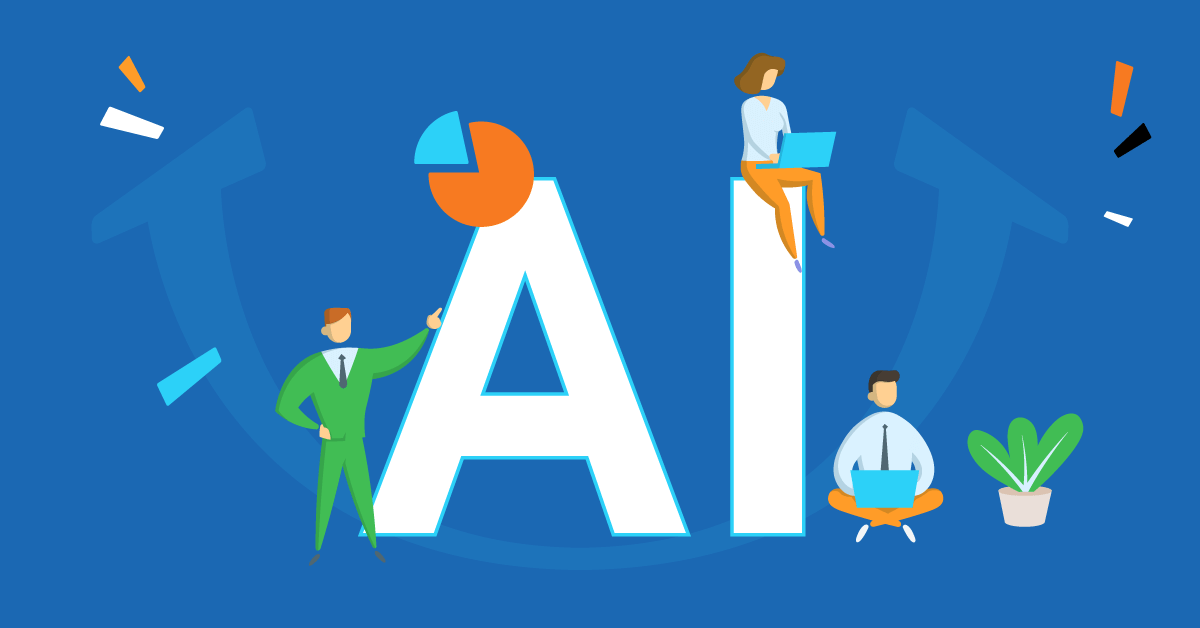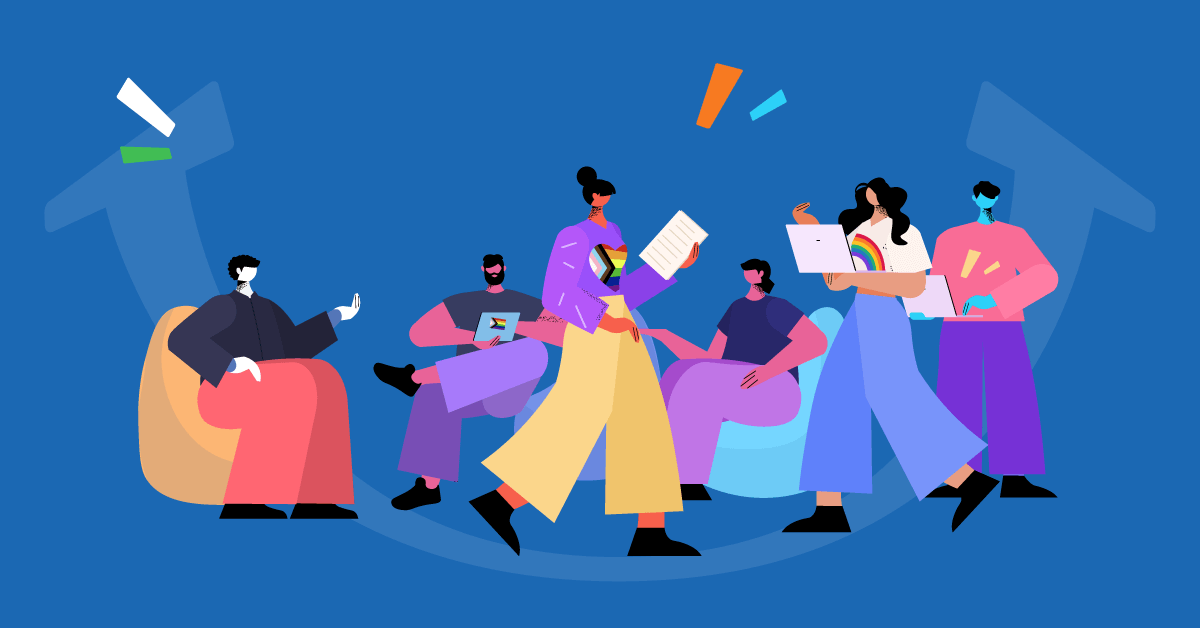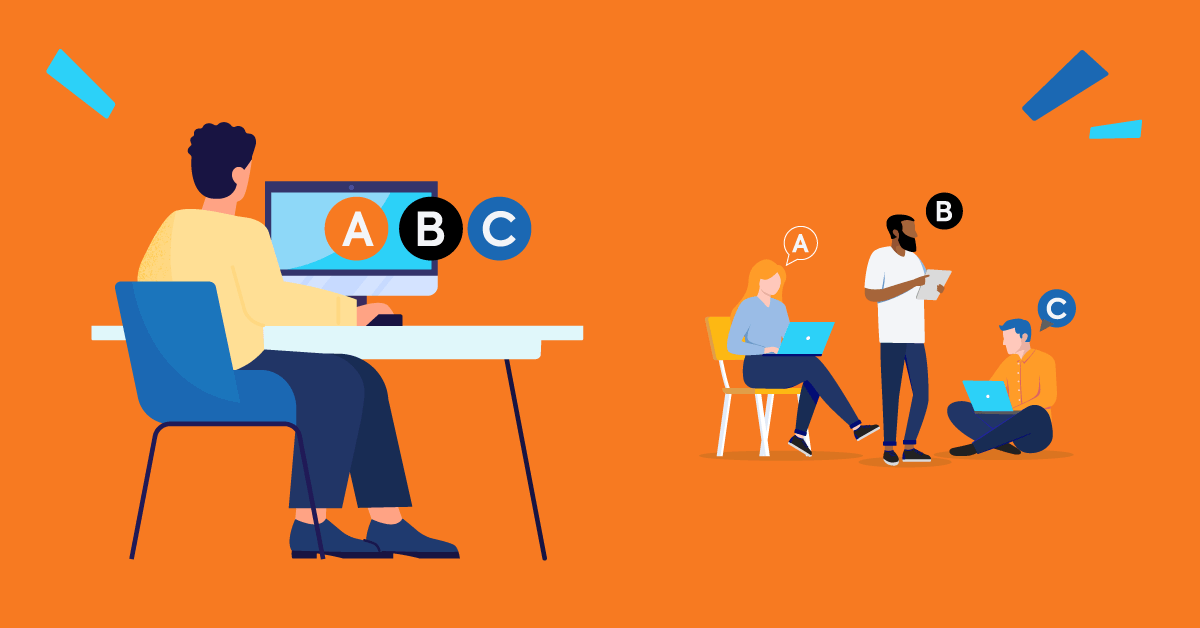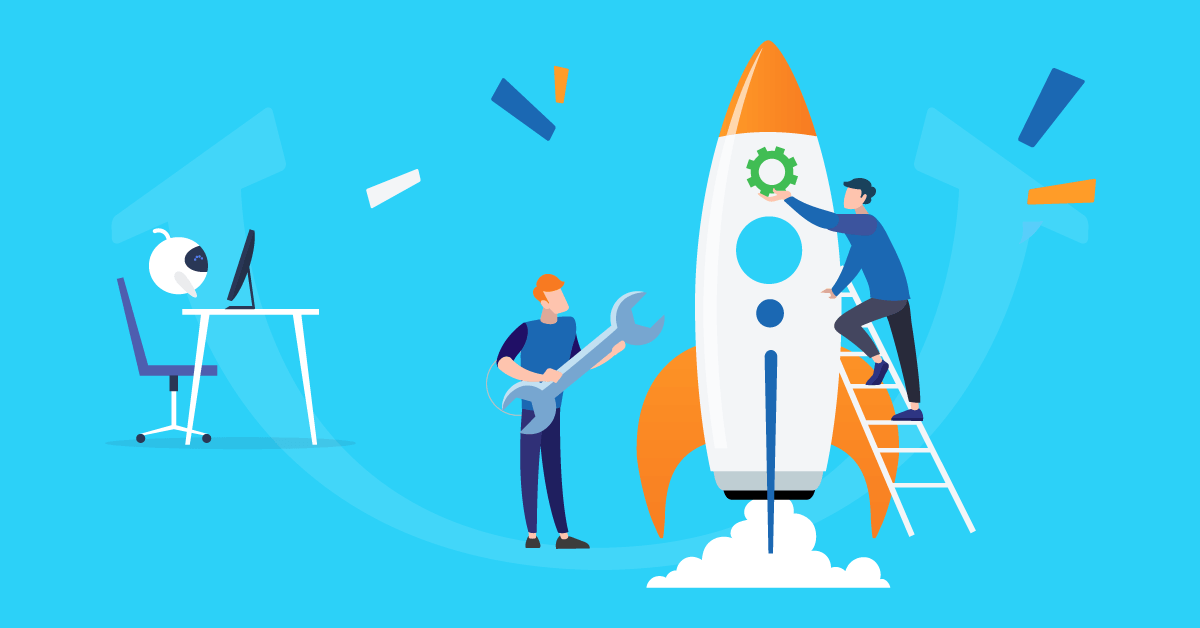Age. It’s just a number, right? Ask any HR manager, and they’ll agree. However old or young, all employees should be treated equally and without prejudice.
There are, quite rightly, strict laws in place to protect this right. But legislation only goes so far. Misconceptions and unconscious biases still have a habit of slipping through the cracks.
As AI settles into the workplace, most HR teams still have more questions than they have answers. Many revolve around how AI will impact roles and responsibilities, processes, and policies. But there are also questions about the human reaction to AI. And one of the most potentially divisive of these centers around age.
More specifically, how will different generations of employees react to the latest digital revolution?
Earlier this year, the Vice President of the USA gave a stumbling speech about AI. Struggling to explain the concept, Harris (a Boomer) could go no further than describing it as a “fancy thing.” Was this awkward explanation down to age or ignorance? It’s hard to tell. But Harris’ example reinforces what seems to be an already firmly-held belief about age and AI.
The common assumption is that older employees and AI present a bigger challenge for HR teams (and organizations in general) than their younger counterparts. In fact, 58% of HR managers agree that, while Millennials and Gen Zers make the seamless shift into digital skills and roles, older workers will “feel less confident” because of AI.
This stat provides a useful insight into the perceptions that exist around AI and older workers. And as AI becomes more embedded in the workplace, there’s an opportunity to dig a little deeper. For example, by asking older employees themselves how they feel about AI. Or by evaluating their skills in this area.
But for now, it helps to understand more about why those perceptions exist. And how accurate they are.
In this post, we dissect the complex relationship between age and AI adoption. We ask: Is there a “more capable vs less capable” generational divide when it comes to optimizing the opportunities of AI? Could stereotyping and unconscious bias about AI and older workers be skewing the picture? (And potentially ignoring the value that a large proportion of the workforce has to offer.) And, if there is a divide, what strategies can help bridge it?
A perfect match? The relationship between AI and younger generations
To understand the assumption that younger employees and AI are more in sync than AI and older workers, we need to break down the dynamic. Let’s look at all of the factors that support this.
They’re digital natives
Younger generations, particularly Millennials and Generation Z, have grown up in a digitized world. Computers, smartphones, and the internet are part of the furniture. Because of this, they tend to be more comfortable with and accepting of new technologies, including AI. This could explain why AI adoption among older employees is slower.
They’ve had a tech-centric education
In many ways, the world of learning shapes expectations that continue throughout life. Millennials and Gen Zers have used online platforms, interactive software, and digital resources throughout their academic journeys.
This exposure equips them with the digital skills necessary to navigate AI systems. The increased availability and diversity of computer science courses is also something that this generation will have benefited from.
They’re used to technological change
Accustomed to frequent software updates, app upgrades, and evolving technology trends, younger workers tend to be more adaptable when it comes to tech. And less phased by changes to tools and systems. This, in turn, makes it easier for them to embrace new AI technologies and quickly integrate them into their work routines.
They’re keen to explore
With the internet being their constant companion, the latest generations of workers are used to having access to the world at their fingertips. Which means asking questions comes naturally.
For this reason, they tend to be more curious. And more willing to explore new technologies and applications. This, in turn, means they’re often more likely to experiment with AI-powered tools. And look for creative ways to leverage them for improved productivity and efficiency.
They want to keep learning
Many younger workers have a growth mindset and a strong desire for continuous learning. And they’re open to acquiring new skills and knowledge. Which is crucial in an era where AI technologies are constantly evolving. This comes in stark contrast to many older workers who, according to research, are less likely to want work-related training.
(Red flag: That said, research also shows that older workers are less likely to expect to be offered training. In fact, only 21% of workers aged between 50 and 59 say they’re encouraged to upskill at work, compared to 56% of those aged between 18 and 29).
Looking for an eLearning platform to upskill employees?
Support continuous learning with TalentLMS.
The training platform that users consistently rank #1.
Virtual collaboration is a given
Powered by online tools and platforms, Generation Z and their Millennial predecessors are used to working virtually. Whether it’s through virtual teams, project management software, discussion forums, or video conferences. This translates well when it comes to adopting AI-driven collaboration and communication tools in the workplace.
They dig data
When digital technology took over, it put data in the spotlight. Born into a data and digitally-driven world, younger employees often have a better grasp of data literacy. Particularly, the ability to interpret and analyze data. This skill is valuable when working with AI systems that rely on data-driven decision-making and analytics.
They talk tech
Younger professionals are often active in tech-related online communities, forums, and social media groups. These platforms provide opportunities for learning, sharing, and staying updated on the latest AI trends and developments.
Don’t remember the first digital revolution? Look to your older workers
So far, we’ve painted a picture of a typically tech-savvy, tech-focused younger employee taking on the might of generative AI and winning (or at least “coping admirably”). But does the picture of AI and older workers look much different? After all, the AI revolution isn’t the only digital transformation the workplace has experienced. Time to roll back the clock to the 1990s.
As the decade begins, in offices all over the world there’s noise. Landline phones, wired into each employee’s desk, ring out loud and clear. Fax machines send out a shrill and persistent dialing tone. Photocopiers and printers whir relentlessly. Company-wide comms are announced in loud voices in centralized meeting rooms. And every now and then, pagers erupt with a series of beeps, competing to be heard amid the backdrop of other sounds.
There’s also paper. Lots of it. Desks are cluttered with memos, reports, letters, envelopes, stamps, and other stationery items. Bulging in-trays act as a physical reminder of outstanding tasks. Cabinets line the walls, cataloging documents and files. And dictionaries, manuals, encyclopedias, and reference books are on hand for research and information.
There’s hardware, too. But not as we know it. PCs wired up to bulky monitors, clunky keyboards, and standalone tower cases loom large on (and under) desks. With a pile of floppy disks on hand to store and transfer data.
By the end of the decade, the scene’s strikingly different. Emails have replaced faxes and hand-posted letters. Mobile phones have pushed landlines and beepers off their pedestal. The world wide web has nudged reference libraries and books off the shelves. The intranet has stepped up to handle most internal comms announcements. Smaller computers, laptops, and portable devices have picked up from PCs. And the integration of various software applications has led to more streamlined workflows and improved productivity. In short, the whole organizational landscape changed.

Lessons from the first (revolution) applied to the second
It’s often forgotten, but today’s older workers lived through the first major, all-encompassing digital revolution. And they’ve lived through all of the technical innovations and organizational transformations that have continued ever since.
Yes, there are differences between what they experienced then and what’s happening now. AI, machine learning, and cloud computing are evolving at a far faster pace than the first round of technological advances in the 90s. And, thanks to greater connectivity, the impact today is on a global, as opposed to a localized scale. But the wide-scale disruption to the workplace and the challenge to roles and responsibilities was as relevant then as it is now.
So, what lessons did the older generation learn the first time around? And how can their experiences help guide the transformative process that’s taking place now?
Institutional memory
When faced with new ways of working, figuring out how to start can often be the hardest part. Institutional memory refers to knowledge that’s acquired “on the job”. And it comes into its own when processes or purposes change.
Why? Because this knowledge translates into pragmatism and clarity on strategies that are more likely to succeed.
Older workers witnessed the evolution of digital technologies from their early stages. They have first-hand knowledge of all of the different ways previous technological shifts impacted the workplace. And a good understanding of what strategies worked and what didn’t.
By applying historical context and perspective to this second wave of technological transformation, they can help establish a good starting point. They can flag up roadblocks that might not be so obvious the first time around. And they can help develop robust risk mitigation strategies to address issues such as system failures and workforce resistance.
Change management expertise
Before the 1990s, change in the workplace wasn’t formally recognized as something that required a strategy. When the first digital revolution took hold, businesses realized they needed a framework. And a formal approach to managing the organizational shifts triggered by all the new tech.
By the end of the decade, most HR teams had Change Management programs added to their list of responsibilities.
Today’s older professionals started their careers navigating a landscape of almost constant upheaval. And, when it comes to AI and older workers, their experience in change management is crucial. Namely, for guiding teams through the challenges of adopting new technologies and adapting to organizational transformations.
Resilience and reassurance
Fear is often a byproduct of change. And, for all of its potential for good, AI has caused levels of anxiety and fear among workers to rise. Job losses, lack of control, lack of understanding, fear of the unknown and a skills deficit are all very real concerns.
Having experienced similar fears during the first digital revolution, older workers are well-placed to reassure younger generations. They’re testimony to the fact that, with resilience and flexibility, technology is more of an opportunity than a threat.
Interpersonal skills
“People who can make their presence felt in a room and have the capacity to forge relationships, motivate, and convince are the ones who will thrive in the age of AI.”
Oxford economist, Carl Benedikt Frey, has a good point about AI and older workers. In an AI-dominated world, people need to demonstrate skills that AI can’t. Here’s where strong interpersonal and communication skills take center stage.
Older generations have decades of experience working with different people, in different situations, and with different agendas. And many will have the higher levels of social skills needed to nurture powerful human connections in the midst of technological changes.
Back to basics
Most younger workers have a seamless and natural relationship with technology. This has its benefits, of course. But it can mean that they give less thought to the core principles that keep it functioning safely and ethically.
Ronald Ashri claims on “Preparing for the AI-workforce”, from TalentLMS’ podcast series Keep It Simple, that using technology is a big “yes.” But people need to discover where to use it and how to make the most of it at work.

Older workers experienced a more staggered, considered, and measured introduction to digitalization. So, when it comes to AI and older workers, they are often better placed to question, challenge, and provide a balanced perspective amid rapid advancements.
A balanced approach
As AI makes its presence felt at every level of the workplace, it’s easy to feel that it’s taking over. But it’s not the only thing that matters.
Every business succeeds and fails on its core values. And it’s important to keep sight of these, which can be hard as technology advances at pace. Having lived through times of change, older generations bring perspective and balance in times of uncertainty. And are more likely to promote the importance of preserving organizational values while embracing technological changes.
Adaptability and flexibility
AI is on track to bring significant disruption to established norms and practices within organizations. Many businesses are battling with skills gaps. And they’re looking to upskilling and reskilling initiatives to align employees with emerging technologies.
For these initiatives to work requires a learning mindset. And an adaptable approach to development. Forced to do this way back in the 90s, many older workers view flexibility and acceptance of change as a fundamental part of their job. Another tick in the box for AI and older workers.
Meet TalentLibrary™
A growing collection of ready-made courses that cover the soft skills
your teams need for success at work
![]()

Age diversity and AI integration: How to achieve cross-generational collaboration
From Baby Boomers and Gen X to Millennials and beyond, each cohort brings its own set of strengths to the AI-powered workplace.
Older generations have insights, experiences, and a broader set of softer skills. Younger generations have curiosity, collaboration, and confidence on their side. The key to success is learning how to bridge the generational divide to bring the two sides together.
The techniques listed below are simple and subtle ways to address age diversity and AI integration. But combined, they all support the mutual transfer of knowledge that blurs the line between AI and older workers and AI and younger workers.
Mentorship programs
Establish formal mentorship programs where experienced employees are paired with younger colleagues. This provides a structured environment for knowledge exchange. Create a list of themed topics that your older workers can offer insights on. For example, coping with change, resilience, and adaptability.
Storytelling sessions
Host regular sessions where older employees can share anecdotes and experiences from their careers. This informal setting can be a rich source of wisdom. But remember to make the link between how those experiences are relevant to AI and workplaces now. And include Q&A opportunities. Then, record and share the sessions so employees who can’t attend can benefit.
Reverse mentoring
Give younger employees the opportunity to mentor their older counterparts in digital skills and trends. This two-way exchange benefits both parties. It gives older employees practical tips and strategies to call on. It also gives younger employees the chance to develop their communication and interpersonal skills.
Workshops and training
Use senior, subject matter experts to lead training sessions on skills that look set to become more dominant in the AI era. Organize these into clusters.
For example, organize sessions around hard skills (such as using AI tools, digital literacy, and digital enablement). And then design training around softer skills (such as interpersonal skills, problem-solving, active listening, and adaptability).
Knowledge sharing platforms
Create opportunities for employees to share articles, videos, or resources related to their experiences and insights. If you’re using an LMS for your training, use in-built online discussion boards to create forums on different topics and assign these to relevant groups.
Case studies and interviews
Interview individuals across your business (and outside it, too, if you have the contacts) and frame questions around key aspects relating to AI. Ask about tips, challenges, and lessons learned. Use internal comms channels (newsletters, email updates, team meetings, and the intranet) to create an ongoing information campaign based on case studies and interviews.
Stop generalizing about AI and older workers: Start with what success looks like
When it comes to AI in the workplace, two assumptions have the potential to stunt progress. The first is that success is about the fast adoption of AI tools and technologies. The second stems from the first. And it’s that older workers are less likely to thrive in this new landscape because AI adoption among older employees is slower.
The truth is, achieving success in the AI era is about so much more than this single measure of success. It’s not just about the tech. It’s also about the ability to fill the gaps left by AI. It’s about harnessing the power of soft skills such as adaptability, communication, and problem-solving. It’s about having a positive, balanced outlook. And it’s about adopting a progressive growth mindset.
Combined, older workers and younger employees cover all of the above. But unless you start with a clear and complete idea of what success looks like, you won’t reap the benefits. So, debunk the myth around AI and older workers. Send out an honest message about age diversity and AI integration by sharing the different measures of success. Be clear about what you need to achieve and how. Provide formal AI training to everyone who needs it. But, most importantly, use what all of your employees, older and younger, have to offer to help you get there.
| Tags: artificial intelligence,Diversity,Soft Skills Development



